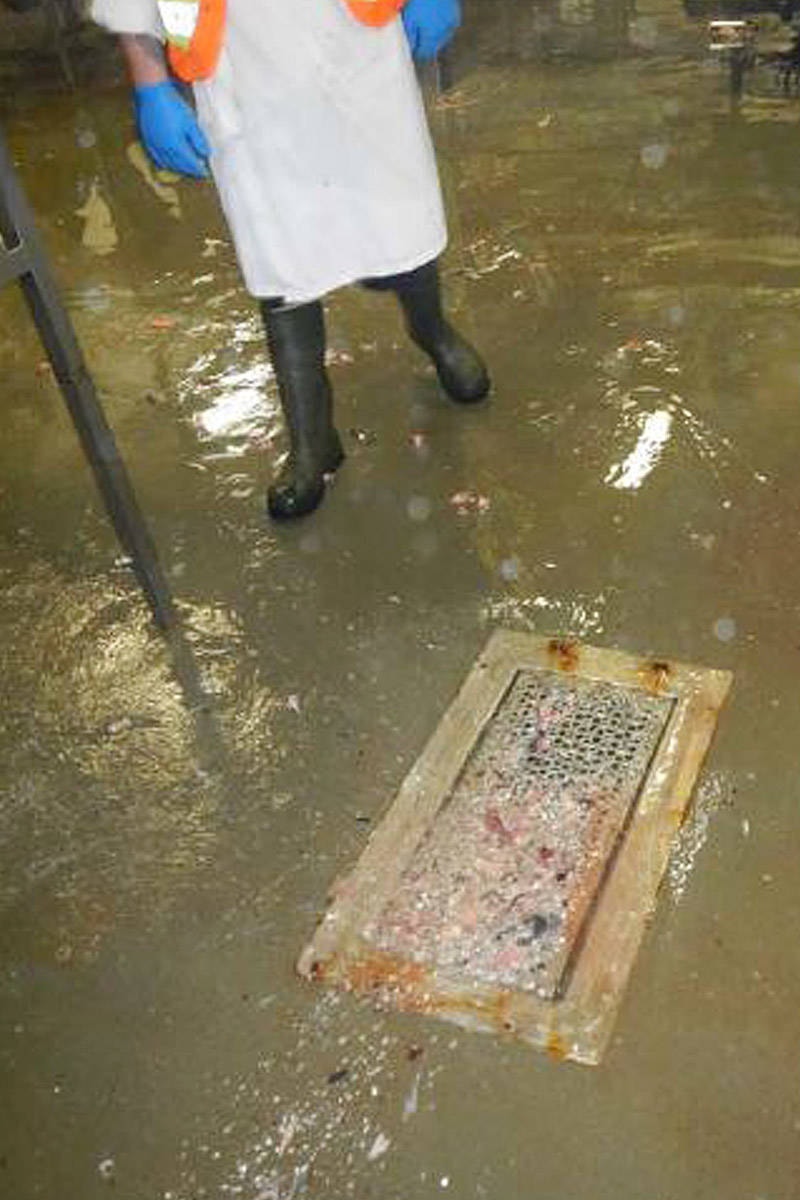Effluence volumes at the Brown’s Bay Packing Company routinely surpassed their permitted levels during the 2016-2017 period, pumping out 37 times the allowable waste water at one point, according to a recently-released provincial inspection report.
But a consultant monitoring the environmental impact concluded the effluence “does not adversely affect the receiving environment,” according to co-owner and managing director David Stover. That monitoring takes place on a quarterly basis, he said.
This comes after a video produced by Quadra Island photographer Tavish Campbell showed bloody effluent pouring from the facility, which is located north of Campbell River.
That footage raised concerns about the effects of pathogens on wild stocks and prompted a provincial audit of effluence-discharging fish plants.
The audit, released on July 4, revealed that 72 per cent of facilities in B.C. were violating the terms of their permits, prompting the government to call for an “updated and strengthened” permitting system.
The inspector’s report for the Brown’s Bay facility said that discharge volumes exceeded the maximum of 28 cubic metres per day several times over.
Quarterly averages ranged from 186 to 484 cubic meters during the 2016-2017 period.
The highest volume during that time was 1,045 cubic metres, more than 37 times the limit.
On the 1,045 cubic metre outflow, Stover said, “I believe that was a one-off,” adding that it might have occurred as workers sanitized the plant, rather than on a fish processing day.
The company applied for changes to its permit in 2011, including a higher effluence limit of 600 cubic metres a day.
If approved, those changes “would bring the permit in line with current operations,” the inspection report states, although the company exceeded the proposed 600 cubic metre limit six times in 2016 and 19 times last year.
Stover couldn’t immediately explain those volumes but said the company is looking into it.
As for the updated permit, he said “it’s definitely overdue” but that the issue is complex.
He said the company began working with the province to update waste water treatment guidelines in 2004, adding that later consultations with the government determined that permits issued in the 1970s and 1980s were “no longer relevant and needed to be updated.”
When the company applied for its permit amendment in 2011, it embarked on “a series of infrastructure improvements in anticipation of the new permit,” Stover said.
He also said the company exceeds many provincial requirements, and belongs to various certification bodies that demand water treatment processes that go beyond the government’s minimum standards.
Indeed, some of the violations described in the report actually resulted from the permit not keeping up with improvements by the company.
The company installed a septic system for toilets at the 50-employee facility that “produces effluent quality significantly better than typical septic tank effluent,” according to the inspection report.
But because that newer septic system isn’t listed in the “authorized works section of the permit,” the company is technically out of compliance.
And the company’s outfall pipe, which discharges the waste water, goes deeper into the bay than required: it’s 100 metres long and positioned 30 metres below the mean low-water mark, while the permit’s required outfall is 30 metres long and 15 metres deep.
That difference also puts the company in violation of its permit, even though the further reach allows for better dilution, according to Stover.
“It’s out of compliance because it’s not in the 1989 permit,” he said.
He added that although the current permit doesn’t require inspections or environmental monitoring, the company has implemented these safeguards since around 2011.
He also said the company disinfects all water involved in processing the fish using a chlorination-dechlorination system, and that it uses mesh screens that remove solid waste.
But those improvements don’t give Brown’s Bay the right to exceed its effluent flow limits, according to the province.
“The permit does not allow for trade-offs, it sets conditions and/or limits that must be met at a minium,” said David Karn, a spokesperson for the Environment Ministry, in an email to the Mirror.
“Each condition of the permit must be met independent of the others.”
Karn said the permitting system is “outdated” and described changes to permits as “a complex process involving public and Indigenous consultation, and much dialogue between the ministry, industry and stakeholders.”
As for Brown’s Bay, he said “the amendment process is underway.”
That updated permit is “currently circulating for consultation and comments,” according to the province’s inspection report.
Stover said he welcomed changes to regulations on fish processing facilities.
“We expect them to be along the lines that we’ve been following since 2011,” he said. “There should be strict regulations.”
